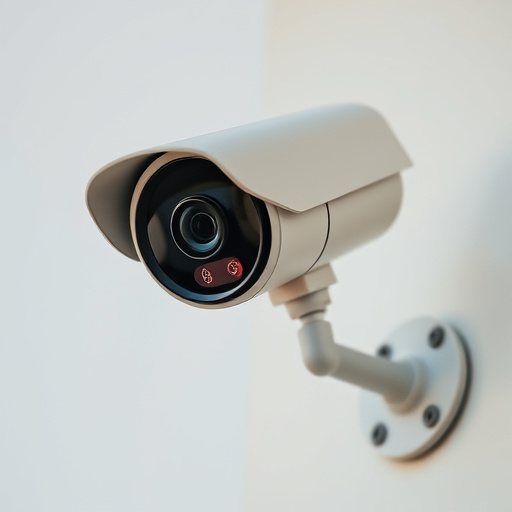Realistic dummy cameras enhance security by mimicking genuine surveillance equipment. Strategically mount them in visible entry points, windows, and high-traffic areas to deter crime without compromising aesthetics. Discreet placement behind furniture or in ceiling-wall junctions creates an illusion of constant monitoring, balancing deterrence and practicality for both residential and commercial security.
- Understanding Realistic Fake Surveillance Equipment
- Choosing Suitable Locations for Dummy Cameras
- Mounting Techniques for Effective Deception
- Benefits and Considerations of Using Simulated Surveillance
Understanding Realistic Fake Surveillance Equipment
Realistic fake surveillance equipment, often called dummy or mock cameras, offer a unique solution for both security and aesthetic purposes. Unlike traditional surveillance systems, these devices provide an invisible layer of protection by mimicking the appearance of genuine cameras. They are designed to blend seamlessly into their surroundings, making it difficult for intruders to discern between real and false surveillance.
When considering where to mount dummy cameras, strategic placement is key. Common locations include corners, high points, or anywhere with a clear line of sight across the area you wish to monitor. These fake cameras can be attached to walls, ceilings, or even incorporated into decorative fixtures, making them an appealing option for both commercial and residential properties. By adding these realistic replicas, businesses and homeowners can enhance their security measures while maintaining an unobtrusive aesthetic.
Choosing Suitable Locations for Dummy Cameras
Choosing where to mount dummy cameras is a strategic process that involves understanding both real and perceived surveillance needs. Ideal locations are often places where genuine security equipment might be found, such as entry points, window areas, and common gathering spots. For instance, mounting dummy cameras near doors or windows can fool intruders into thinking they’re under constant watch. Additionally, high-traffic areas like hallways, lobbies, or parking lots benefit from these fake devices, creating a false sense of security that could deter criminal activity.
When selecting where to mount dummy cameras, consider both open and hidden spots. Visible dummy cameras can serve as a deterrent, while strategically placed ones in plain sight can be supplemented with less conspicuous models disguised as everyday objects like plants or light fixtures. This versatility allows for tailored coverage, ensuring that potential threats are monitored effectively without compromising aesthetics or revealing the actual security system in place.
Mounting Techniques for Effective Deception
Realistic-looking fake surveillance equipment, or dummy cameras, have become increasingly sophisticated tools for both security professionals and homeowners looking to deter crime. To maximize their effectiveness as a deception measure, proper mounting techniques are crucial. The first step in where to mount dummy cameras involves understanding the environment you’re trying to protect. High-traffic areas like entryways, windows, and doors are prime spots, as they serve as common access points for potential intruders.
Securely attaching the dummy cameras in these strategic locations can help create a false sense of security for would-be criminals, deterring them from targeting your property. Additionally, mounting techniques should consider both visibility and subtlety. Place the cameras in plain sight, where their presence is obvious, to send a clear message that your property is under surveillance. However, ensure they’re not so obtrusive as to disrupt daily activities or draw unwanted attention from passersby.
Benefits and Considerations of Using Simulated Surveillance
Using realistic looking fake surveillance equipment, or dummy cameras, offers a range of benefits for both residential and commercial security. One of the primary advantages is their ability to deter potential criminals, as they provide the illusion of constant monitoring without the actual cost and complexity of installing real cameras. Dummy cameras can be strategically placed in discreet locations, such as where walls meet ceilings or behind furniture, to act as a powerful visual deterrent.
When considering the use of simulated surveillance, it’s essential to balance effectiveness with practicality. While dummy cameras are an excellent solution for deterrence, they should not be relied upon solely for security. Proper placement, like where to mount dummy cameras, is crucial; ensuring they mimic real camera positions helps maintain a convincing appearance. Additionally, combining these fake surveillance devices with actual security systems enhances overall safety, providing layers of protection that criminals find increasingly difficult to bypass.
Realistic fake surveillance equipment offers a strategic advantage in enhancing security while maintaining an element of deception. By carefully selecting locations and employing effective mounting techniques, such as using dummy cameras where to mount them strategically, you can deter potential threats and mislead intruders. The benefits extend beyond physical security; it creates a psychological impact, deterring malicious activities by making would-be perpetrators question their surroundings. However, ethical considerations should be kept in mind, ensuring these simulations do not undermine genuine security measures or infringe on privacy rights.
